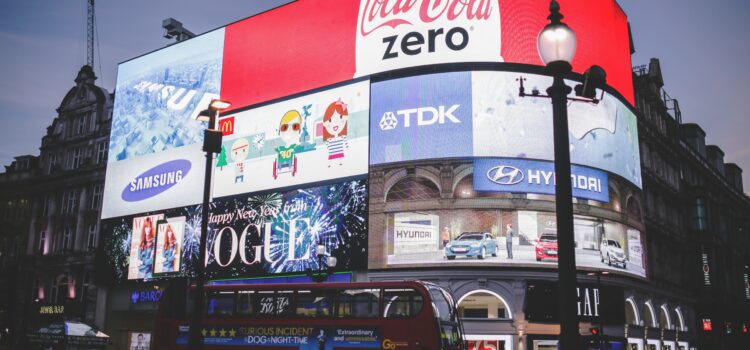

This article gives you a glimpse of what you can learn with Shortform. Shortform has the world’s best guides to 1000+ nonfiction books, plus other resources to help you accelerate your learning.
Want to learn faster and get smarter? Sign up for a free trial here .
Do you want to drive more sales? What are the best persuasive techniques in advertising?
Advertising is an essential part of business, but it can take up a big part of your time and budget. That’s why every business needs effective advertisements that are budget-friendly, appealing to customers, and guarantee sales.
Here are the best persuasive techniques in advertising to grow your business.
1. Appeal to Ethos, Pathos, and Logos
When you try to understand others and their desires in the advertising process, it encourages them to do the same toward you. And you can help them to understand why you’re selling your product by communicating what your business is, how you, as a salesperson, feel, and what you think. Specifically, The 7 Habits of Highly Effective People by Stephen R. Covey argues that a key persuasive advertising technique is to use the Greek rhetorical philosophy of ethos, pathos, and logos, in that order.
- Ethos is your integrity and credibility, which makes people trust you.
- Pathos deals with feelings; you must be on the same page emotionally as the person you’re communicating with. To be on the same page, you need to first understand the other person’s feelings and perspectives, which requires empathic listening.
- Logos invokes logic, which is the information and reasoning for your perspective.
Use Ethos to Persuade Your Audience
The first persuasive appeal, ethos, convinces your target audience that you’re trustworthy and puts them in the mood to listen to you. In Thank You for Arguing, Jay Heinrichs outlines one powerful element of a strong ethos appeal: virtue.
When your target audience believes that you share the same values as they do, they see you as someone virtuous, or trustworthy and aligned with their cause. Heinrichs explains that the key to appearing virtuous is meeting your audience’s expectations, or fitting in with them—from your appearance and manner of speaking to your interests and sense of humor. When your audience believes you’re in sync with them, they find you easier to like, listen to, and trust.
Heinrichs suggests three areas in which to align with your target audience: values, experiences, and appearance.
1) Demonstrate shared values: Don’t talk about your personal values. Instead, speak to the values of your audience—even if you don’t necessarily believe those values to be true or right. People who think you share their values will naturally trust you more, making it easier for you to persuade them of something they’d normally be opposed to.
2) Demonstrate shared experiences: Pay attention to your audience’s identity, then change the way you speak about your experiences to match. For example, you’re arguing that your company is creating technology that would be helpful for teachers. Though you’re not a teacher, you can explain how your volunteer experience with underfunded city schools convinced you to create an affordable product to make teachers’ jobs easier.
3) Demonstrate shared appearance: Heinrichs suggests matching the way you look and sound to audience expectations—in other words, dress like them and speak like them.
Use Pathos to Persuade Your Audience
The second persuasive appeal after ethos is pathos, or emotion. Heinrichs notes that our emotions are much stronger than our rationale—therefore, a pathos-based persuasive technique in advertising is best for getting the audience to buy from you or become a loyal customer. Pathos helps you bridge the gap between your target audience agreeing to your choice and acting on it.
Appeal to your audience’s emotions by creating a strong bonding moment or focus the discussion of a rival company, making your audience turn against your rival. One of the most effective is appealing to tribalism, or group identity.
Heinrichs notes that the strongest form of tribalism is patriotism, or loyalty to a country, school, town, or other entity. He explains that this feeling is largely due to your body’s oxytocin (the bonding hormone) levels. Oxytocin naturally spikes slightly when you’re in a group, helping you feel closer to other members. However, when your group is threatened in any way, your oxytocin levels go through the roof, triggering strong emotions such as defensiveness, jealousy, and competition—all of which can lead to impulsive actions and decisions.
Heinrichs notes an easy two-step process to manipulate an audience’s oxytocin levels to harness the power of tribalism:
- Create a strong group bonding moment: Speak to the potential customer warmly and with love, and focus on what you have in common.
- Turn your focus to a discussion of a rival company, and make your audience feel threatened—point out the ways “they” hold an advantage over “us,” or ways they’ve insulted “our” values and standards.
Use Logos to Persuade Your Audience
The last persuasive appeal is logos, which helps you use your audience’s logic and beliefs to make your business look as advantageous as possible.
Logos bolsters arguments to achieve the goal of changing your audience’s mind. Heinrichs explains that logos helps you use your audience’s logic and beliefs to make your desired choice look as advantageous as possible. This means presenting the argument most persuasive to your audience rather than the most persuasive to you.
Heinrichs explains that there are three steps to using logos effectively:
- Find the audience truism: Figure out a commonly held opinion or belief that represents your target audience’s values. If you already used pathos to appeal to them, you should have a feeling of what this is. But if you haven’t, spot your audience’s truisms by listening to phrases they repeat, listening to ways they reject you, or using labels to make them feel a certain way about your product or service.
- Decide on the most persuasive reasoning type: Either use what you know of your audience’s values to either use their truism to your advantage, or create a new truism that they can get on board with.
- Define terms to your advantage: Attach positively regarded terms to the product or service you’re advertising. This will help you take control of the situation to easily influence the audience.
2. Create Good Ads
The primary goal of a persuasive advertising technique is to increase profit, and that’s accomplished with ads. Advertisements can be shared through newspapers, billboards, television, radio, or social media.
Smart advertising can be very effective—one copywriter found that a good ad sold almost 20 times as much as a bad one. (In contrast, bad advertising can be so ineffective it actually harms sales—for example, when Ford advertised in every second issue of Reader’s Digest, the people who had seen the ads bought fewer vehicles than those who hadn’t.)
Ogilvy on Advertising by David Ogilvy says to increase profit, ads must promise the consumer a benefit, and ads that don’t do this, regardless of how attractive or creative they are, will fail.
- For example, one agency that won an advertising industry Clio award for creativity went out of business, and another winner lost the account whose advertisement won the award.
Even if products sell well on their own, good advertising can increase profit. For example, Listerine sold perfectly well for 40 years. But when it was advertised as a cure for bad breath, sales exploded.
Steps to Creating Good Ads
There are some steps for creating a good ad regardless of the medium:
1. Learn about the product. It’ll be easier to make associations and come up with potential benefits when you have a solid knowledge base.
- For example, Ogilvy read about Rolls-Royce cars for three weeks before starting work on its campaign. As a result, he was able to write factual, informative ads and highlight special features.
2. Study your competitor’s ads. When you come across effective ads, study and copy the techniques used. Particularly study direct-response ads (ads that encourage consumers to contact a company directly to make a purchase) because these tend to be tested extensively.
3. Engage in consumer research. In particular, try to find out what product promise will most appeal to consumers.
4. Position your product. To “position,” determine what the product does and who the target audience is.
5. Choose a brand image. “Image” is the personality of a product, which stems from its inherent qualities as well as marketing variables such as price, packaging, and advertising style. Typically, cultivating a high-quality image works well, especially for products that are used in public. If your advertising is tacky or cheap, it will make your product look tacky and cheap, and people don’t want to be associated with these qualities.
- For example, Jack Daniel’s, Grand Dad, and Taylor whiskey all taste very similar. However, people who prefer one over the other do so because they like the image that’s associated with the brand. For instance, Jack Daniel’s projects an image of quality (it’s expensive).
6. Come up with big ideas. Big ideas will hook readers or viewers. They’re very hard to come up with—Ogilvy only had 20 throughout his entire career. Induce ideas by doing your research and then letting your mind unconsciously connect ideas as you go for a walk, drink, or take a bath.
In addition to being hard to come up with, big ideas are also hard to recognize, but if you can answer yes to the following questions, you’re on the right track:
- Is the idea idiosyncratic?
- Does it provoke gasps?
- Will it make other advertisers jealous?
- Does it mesh with the company’s growth strategy?
- Will it still be effective three decades from now? (Even running for five years is impressive.)
7. Spotlight the product and make it the star. If there’s nothing different or unique about your product compared to your competitors (for example, you sell table salt), make your advertising itself unique, or be extra clear and convincing. (You don’t have to convince people that your product is the best, you just have to convince them that it’s good. If you do this and explain yourself better than everyone else, it doesn’t matter if their product is better—people who are uncertain or confused will buy yours.)
8. Avoid working in committees. Committees tend to overcomplicate things and require compromise, and as a result, the final ad tends to say nothing of importance. Committees also slow down creation—it can take a committee up to half a year to come up with an agreed-upon campaign.
9. Reuse your ads until they stop selling your product. You can usually repeat an ad at least four times without decreasing readership. This is because consumers aren’t all looking for the same product at the same time—the people who bought cars last year aren’t the same people looking for a car this year. There’s no point in reusing an ad if it’s not persuasive enough anymore.
3. Take Advantage of Social Media
While there is an advantage to being familiar with persuasive advertising techniques in all mediums, social media is by far the most important technique for several reasons.
These days, almost everyone has a mobile device and many people are on social media. There are millions of mobile subscriptions in the US and almost half of the time people spend on their phones is used for social media.
Despite social media’s popularity, many marketers and businesses are reluctant to embrace new platforms. This is for a variety of reasons, including feeling they don’t have time or thinking the new platform is silly. This means that any brands that do embrace new platforms have a head start. Often, early adopters are small businesses because they don’t have the same PR and legal red tape that larger companies do.
If you work hard to create great content and show the community you care, you’ll do well even if other companies have more resources. Being cared for by a business is so rare that it surprises people and leaves an impression.
The best way to use social media as a persuasive technique in advertising is to embrace two types of content: “jabs” and “hooks.” Jab, Jab, Jab, Right Hook by Gary Vaynerchuk goes into further detail about this unique concept.
Jabs and Right Hooks
In marketing, a metaphorical jab is content that builds the relationship between you and your customer. Jabs should be intriguing, engaging, and/or create some sort of emotional response, such as making people laugh.
A metaphorical right hook is marketing content that includes a call to action and aims to convert a sale. Right hooks need to be easily comprehensible, work on all digital devices, including mobile, and meet the conventions of the platforms they appear on.
While the right hook is the content that creates a sale, jabs are just as important. If you were in a boxing ring with an opponent, you couldn’t just throw a right hook out of nowhere; your opponent would slip out of the way. You need to set up an opportunity to throw the hook by throwing jabs first. It’s the same in marketing—before you ask a customer for a sale, you need to build a relationship with them. There’s no universal combination of jabs and hooks that result in a sale every time—you’ll have to experiment.
But how do you create great jabs and hooks to attract customers? These eight tips apply to any platform:
1. Use native content including high-quality images. For example, people go on Pinterest to look at aspirational images. If your brand shares aspirational images, people on Pinterest will be interested in your posts.
2. Tailor your jabs to the customer’s desires. For example, if you’re a cosmetics company, you might create an Instagram contest that encourages people to share photos of themselves wearing your products.
3. Make sure your hooks include a price and link to the right place. For example, on Tumblr, Target posted about a dress and included links that took customers directly to the dress product page.
4. Take advantage of pop culture. For example, on Tumblr, comedian Paul Scheer posted about Breaking Bad to insert himself into a topic that people were already discussing.
5. Make your content micro. For example, on National Sibling Day, Netflix tweeted the line “Hey brother” from Arrested Development, which Netflix had just recently aired. The only other text was a hashtag and link.
6. Maintain your identity. For example, include your logo or slogan on the images you post on Facebook.
7. Cross-pollinate. For example, Surf Taco has a Twitter following that’s almost 13 times larger than its Instagram following, and on Twitter, they linked to an Instagram photo.
8. Don’t interrupt. Don’t use banner ads or pop-ups, which are highly interruptive. When you interrupt someone from their media with an ad, at best they’re annoyed, at worst, they now hate your brand.
Using these persuasive advertising techniques, your social media presence will attract your target audience and more to your company.
4. Advertise Your Brand With a Story
As you’re in the advertising stage, you should already have a brand (i.e. a logo, slogan, symbol, etc.) that customers can easily identify your company with. One of the most persuasive techniques in advertising is to plug your brand’s details into a story structure that casts your customer as the protagonist. This strategy shows how your brand will help them reach their story’s happy ending.
In Building a StoryBrand, Donald Miller devised his own formula of story structure into which you can enter the details of your company to create a storyline: a document telling the story of how your brand helps customers achieve their goals. You can then draw from the storyline to craft every piece of marketing collateral for your brand. The result will be cohesive, concise, and clear marketing that resonates with customers.
To create a story, Miller advocates using his StoryBrand 7-Part Framework. This is a simplified version of the most common storytelling structure used in commercial films. Using this, you’ll create what Miller calls a “BrandScript,”: a document describing your customer’s story.
Here are the seven parts to this effective persuasive technique in advertising, showcasing your customer’s (the protagonist’s) journey to buy your (the mentor’s) product:
- The customer-protagonist wants something
- The customer-protagonist encounters a problem
- The brand-mentor steps in to help
- The brand-mentor presents the customer-protagonist with a plan
- The brand-mentor calls the customer-protagonist to action
- The negative stakes of not taking action
- The happy ending of following the plan
Final Words
After using these methods, your new customers will be so satisfied that they won’t get enough of your business. And hopefully, they’ll bring their friends that will become loyal customers who will never abandon your company for a rival.
Are there any other persuasive techniques in advertising that we missed? Let us know in the comments below!

Want to fast-track your learning? With Shortform, you’ll gain insights you won't find anywhere else .
Here's what you’ll get when you sign up for Shortform :
- Complicated ideas explained in simple and concise ways
- Smart analysis that connects what you’re reading to other key concepts
- Writing with zero fluff because we know how important your time is






